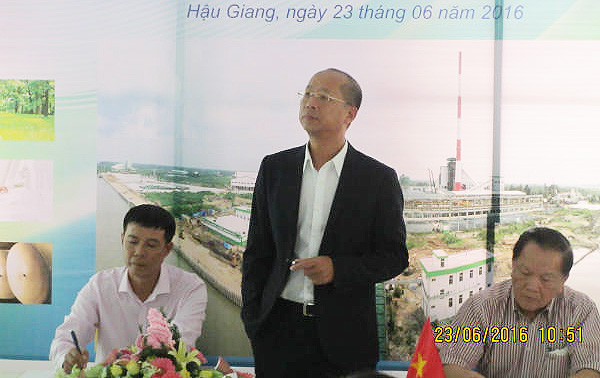Lee&Man to be fined for unregistered press conference
 |
According to a representative of the Hau Giang Department of Information and Telecommunications, such a fine is included in Decree No.159/2013/ND-CP dated November 12, 2013, providing administrative penalties for violations arising in the realm of journalism and publication.
Although the press conference was unlicensed, representatives of the Department of Natural Resources and Environment and the Department of Industry and Trade from Hau Giang Provincial People’s Committee participated in the event.
Previously, numerous associations, experts, and residents expressed concerns that Hong Kong company Lee & Man Paper’s paper production factory may cause serious environmental pollution if its waste treatment system is not scrutinised.
On June 20, the Vietnam Association of Seafood Exporters and Producers (VASEP) proposed the Vietnamese government to scrutinise the waste treatment system of the paper production factory before it comes into operation in August.
According to the VASEP, the project is designed to discharge around 28,500 tonnes of soda, arsenic, and cyanide each year into the Hau River and the sea. The large toxin volume can kill disrupt Hau River’s ecosystem by destroying seafood resources and seriously affecting aquaculture in the Mekong Delta, which accounts for over 70 per cent of the country’s total aquaculture area, costing Vietnam 40 per cent of its seafood volume and 60 per cent of its seafood export.
Amid increasing concerns, Lee & Man held a press conference where general director Chung Wai Fu confirmed that the plant has a modern wastewater treatment system with a capacity of 20,000 cubic metres a day. Besides, they will not use sodium hydroxide (NaOH), a major pollutant, at any stage of the production process.
Fu added that once operational, the wastewater treatment facility would be supervised by the Ministry of Natural Resources and Environment.
Licensed in June 2007, the 200-hectare project’s construction was kicked-off in August 2007. However, the project had to be put on hold because of the adverse effects of the global economic downturn. Construction was also delayed for a long period because the factory failed to meet environmental protection regulations.
The project's investment certificate has been extended five times to date. In early 2015, the construction was officially resumed.
What the stars mean:
★ Poor ★ ★ Promising ★★★ Good ★★★★ Very good ★★★★★ Exceptional
Latest News
More News
- Businesses ramp up production as year-end orders surge (December 30, 2025 | 10:05)
- Vietjet chairwoman awarded Labour Hero title (December 29, 2025 | 13:06)
- How to unlock ESG value through green innovation (December 29, 2025 | 10:03)
- AI reshapes media and advertising industry (December 29, 2025 | 08:33)
- FPT and GELEX sign deal to develop blockchain tech for global markets (December 29, 2025 | 08:29)
- Vietnam’s GDP forecast to grow by 9 per cent in 2026 (December 29, 2025 | 08:29)
- Women entrepreneurs are key to Vietnam’s economic growth (December 29, 2025 | 08:00)
- Vietnam's top 500 value-creating enterprises announced (December 27, 2025 | 08:00)
- The PAN Group shaping a better future with ESG strategy (December 26, 2025 | 09:00)
- Masan Consumer officially lists on HSX, marking the next phase of value creation (December 25, 2025 | 13:20)

















 Mobile Version
Mobile Version